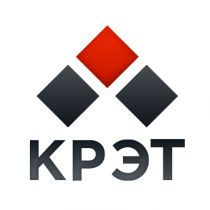Global Abrasives Market Analysis Report, 2019: Forecast to 2025 by Product Type, Material, End-use, and Region - ResearchAndMarkets.com
The "Abrasives Market Size, Share & Trends Analysis Report By Type (Bonded, Coated, Superabrasive), By Material (Natural, Synthetic), By End Use (Automotive, Machinery), By Region, And Segment Forecasts, 2019 - 2025" report has been added to ResearchAndMarkets.com's offering.
The global abrasives market size is anticipated to reach USD 59.34 billion by 2025. It is expected to expand at a CAGR of 5.9% during the forecast period. Rising automotive production and demand for superabrasives in high performance applications are anticipated to fuel the growth.
Rapidly growing end-use industries are anticipated to propel the global demand for abrasives. These products are used in transportation, electronics, manufacturing, and other end-use industries for smoothening, grinding, and polishing product surfaces. Based on product type, the market is divided into three types - coated, bonded, and superabrasives. Their use is specific to designated applications.
Europe constituted the second largest market share of 19.4% in terms of revenue in 2018. The regional growth is attributed to growing demand for bonded and coated abrasives suitable for precision grinding processes. Ongoing construction projects in Russia, Poland, and Western European countries are expected to offer growth opportunities to synthetic abrasives segment.
Electronic and electrical equipment segment is anticipated to expand at a CAGR of 7.7% in terms of revenue, during the forecast period. Technological advancements coupled with escalating demand for electronic and electrical equipment owing to growing population and consumer spending is expected to have a positive influence on the global market. For instance, according to IBEF, the electrical equipment market in India is expected to reach USD 100 billion by 2022 from USD 21 billion in 2017, due to growth in the power industry of the country.
The abrasives market is competitive in nature owing to presence of significant players such as Saint-Gobain, the 3M Company, NORITAKE CO., INC, Robert Bosch GmbH, and KWH Mirka. Certain manufacturers are horizontally integrated across the value chain. For instance, the 3M Company manufactures abrasives and has its presence in the advanced ceramics business as well.
Several strategic initiatives are taken by the manufacturers to increase their market share, global footprints, and customer base in the market. For example, in February 2019, Sak Abrasives Inc. acquired Buffalo Abrasives Inc.
Further key findings from the report suggest:
- Natural abrasives segment is forecast to register a CAGR of 5.5% in terms of revenue, due to demand from North American and European countries
- Metal fabrication is expected to register the fastest CAGR of 5.2% in terms of volume over the forecast period to lower the manufacturing cost
- In terms of revenue, bonded segment held a market share of 50.3% in 2018 owing to growing demand for high precision grinding in automotive industry of Asia Pacific and North America
- Asia-Pacific is expected to register the highest CAGR of 7.2% during the next seven years in the abrasives market, due to increasing infrastructural activities and growth in the manufacturing segment of the developing countries in the region
- In March 2018, Bosch developed a two-step grinding system for angle grinders. It consists of an SCM disc, which is used to achieve fine surface
Key Topics Covered
Chapter 1 Methodology and Report Scope
Chapter 2 Executive Summary
Chapter 3 Abrasives: Market Variables, Trends, & Scope
3.1 Penetration & growth prospect mapping
3.2 Industry value chain analysis
3.2.1 Raw material outlook
3.3 Regulatory Framework
3.3.1 Federal regulations for abrasives in medical applications:
3.3.2 Workplace safety and health act for manufacturing abrasives
3.3.3 U.S. Environmental Protection Agency (EPA) regulations on abrasives
3.3.4 Federation of European Producers of Abrasives (The European Standard, EN 13743)
3.4 Market dynamics
3.5 Market Driver Analysis
3.5.1 Increasing demand from automotive industry
3.5.2 Increasing demand for superabrasives in high-performance applications
3.6 Market restraint analysis
3.6.1 Stringent regulations and volatile raw material costs
3.7 Industry analysis - Porter's
3.8 PESTEL Analysis
Chapter 4 Abrasives: Product Type Estimates & Trend Analysis
4.1 Abrasives: Product Type movement analysis, 2018 & 2025
4.2 Bonded
4.3 Coated
4.4 Superabrasives
Chapter 5 Abrasives: Material Estimates & Trend Analysis
5.1 Abrasives: Material movement analysis, 2018 & 2025
5.2 Natural
5.3 Synthetic
Chapter 6 Abrasives: End use Estimates & Trend Analysis
6.1 Abrasives: End use Movement Analysis, 2018 & 2025
6.2 Automotive
6.3 Machinery
6.4 Metal fabrication
6.5 E&E Equipment
6.6 Other End uses
Chapter 7 Abrasives: Regional Estimates & Trend Analysis
7.1 Abrasives: Regional snapshot, 2018 & 2025 (USD Million)
7.2 Regional movement analysis & market share, 2018 and 2025
7.3 North America
7.4 Europe
7.5 Asia-Pacific
7.6 Central & South America
7.7 Middle East & Africa
Chapter 8 Abrasives: Competitive Landscape
8.1 List of key market players
8.2 Competitive Environment
8.3 Company market positioning
8.4 Strategy Framework
Chapter 9 Company Profiles
9.1 The 3M Company
9.2 Saint-Gobain S.A.
9.3 NIPPON RESIBON CORPORATION
9.4 Robert Bosch GmbH
9.5 DRONCO GmBH
9.6 Henan Huanghe Whirlwind Co. Ltd.
9.7 KWH Mirka
9.8 Asahi Diamond Industrial Co. Ltd.
9.9 TYROLIT Schleifmittelwerke Swarovski KG
9.10 Henkel AG & Company, KGaA
For more information about this report visit https://www.researchandmarkets.com/r/a8eqe4
View source version on businesswire.com: https://www.businesswire.com/news/home/20190822005541/en/




